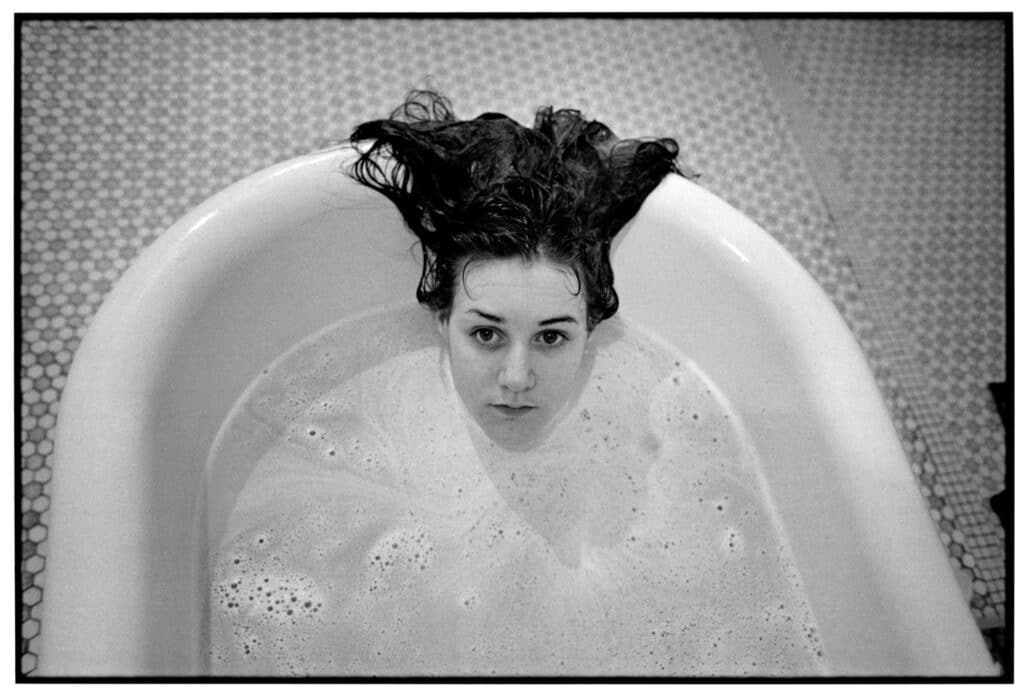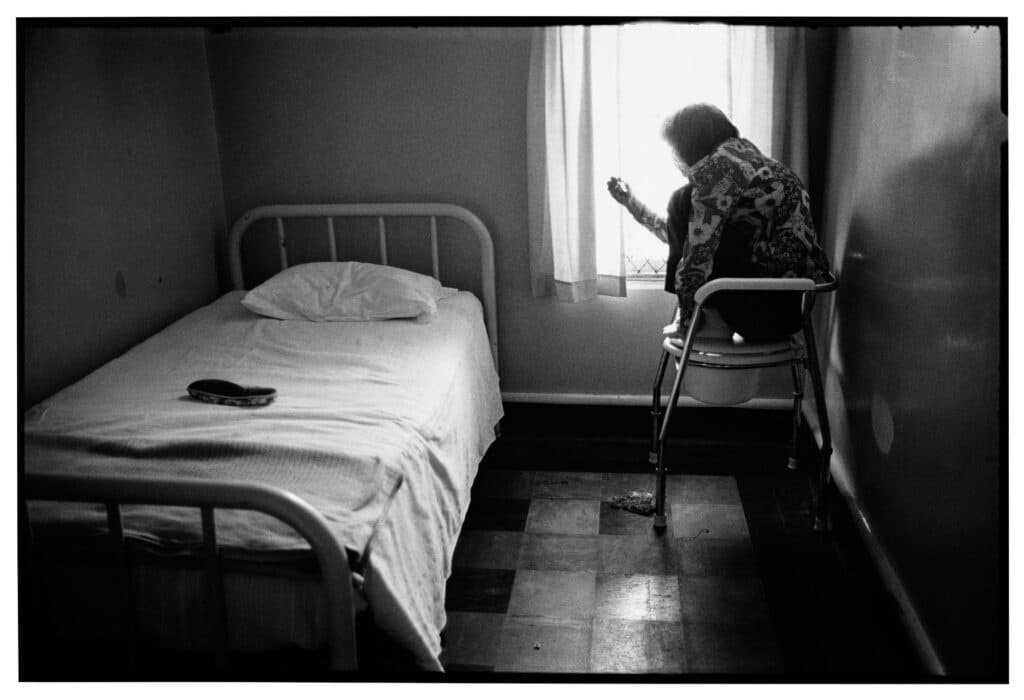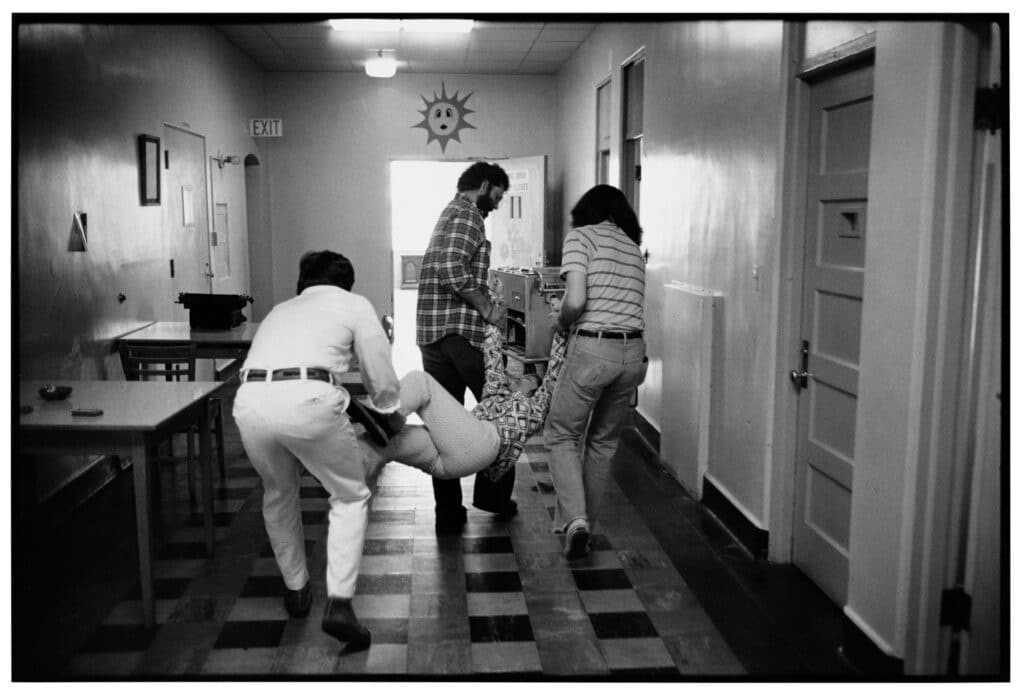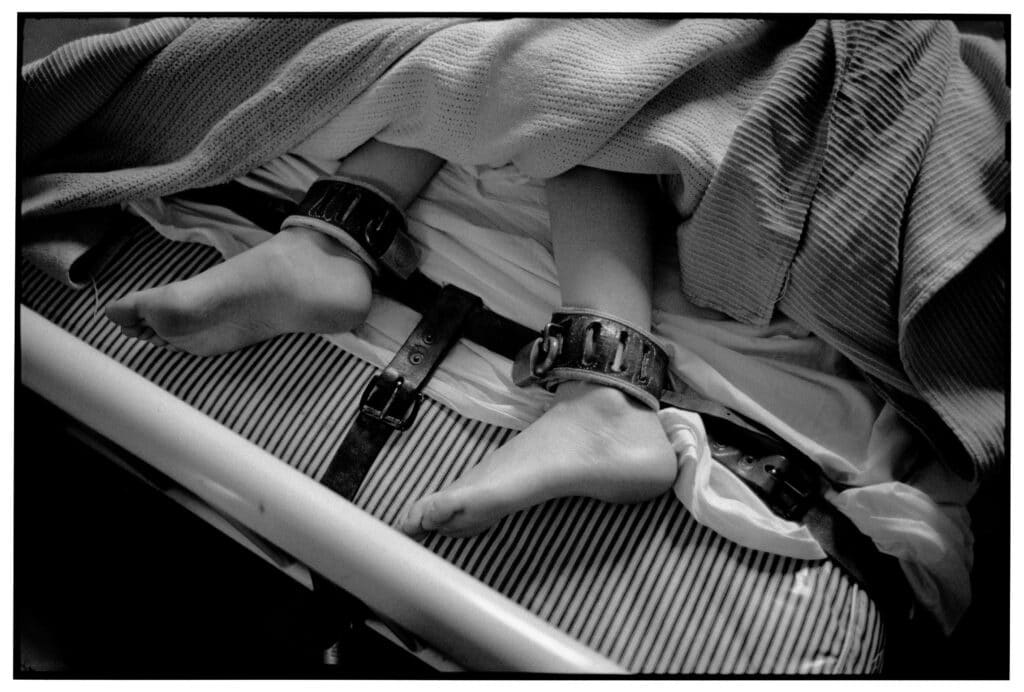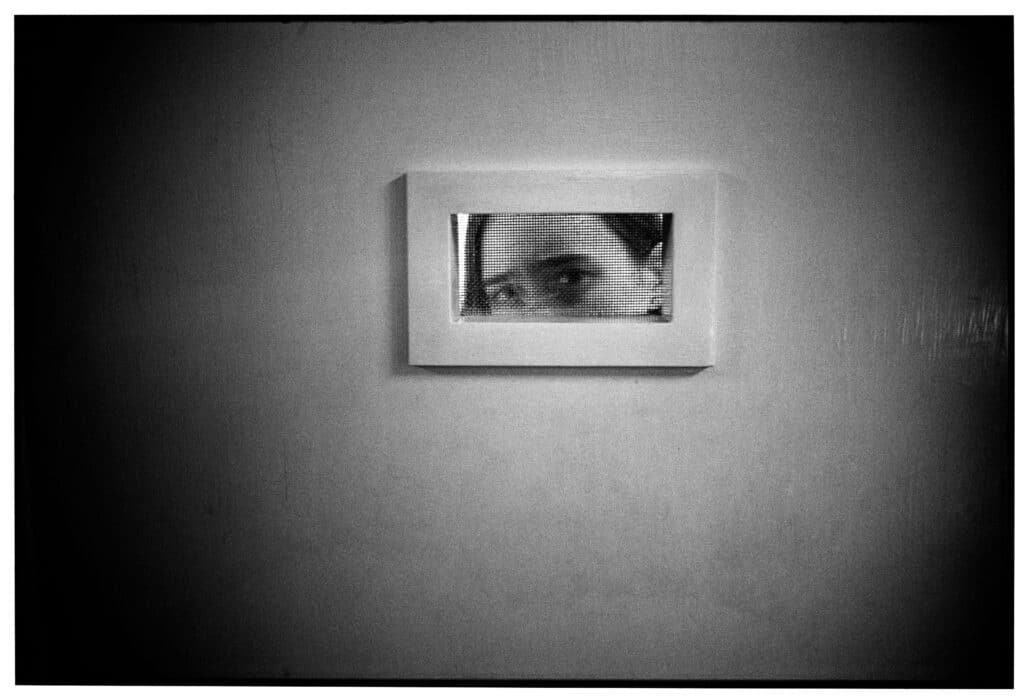“When I close my eyes and I think of images, I think of long hallways with fluorescent lights over them. With people peeking out of open doorways, waiting to see if it’s time to go out of their rooms.”
Photographer Mary Ellen Mark recounts these thoughts in a conversation recorded on Monday, March 22, 1976. It was Day 8 of the project to document the lives of the women who lived on Ward 81 at Oregon State Hospital, the only locked mental health ward in the state for women. Accompanying Mark was Dr. Karen Folger Jacobs, a writer and licensed therapist.
Mark and Jacobs undertook a monthlong stay at Oregon State Hospital to photograph, observe, and interview the women who called Ward 81 home. For the project, the two women would live and work in the hospital. They spent their days on Ward 81 with the women there, and at night would sleep in two small rooms on Ward 11 nearby. They had hoped to also sleep on Ward 81 but were told they would not be granted beds there because of space limitations, as Jacobs recounts in her essay in the book.
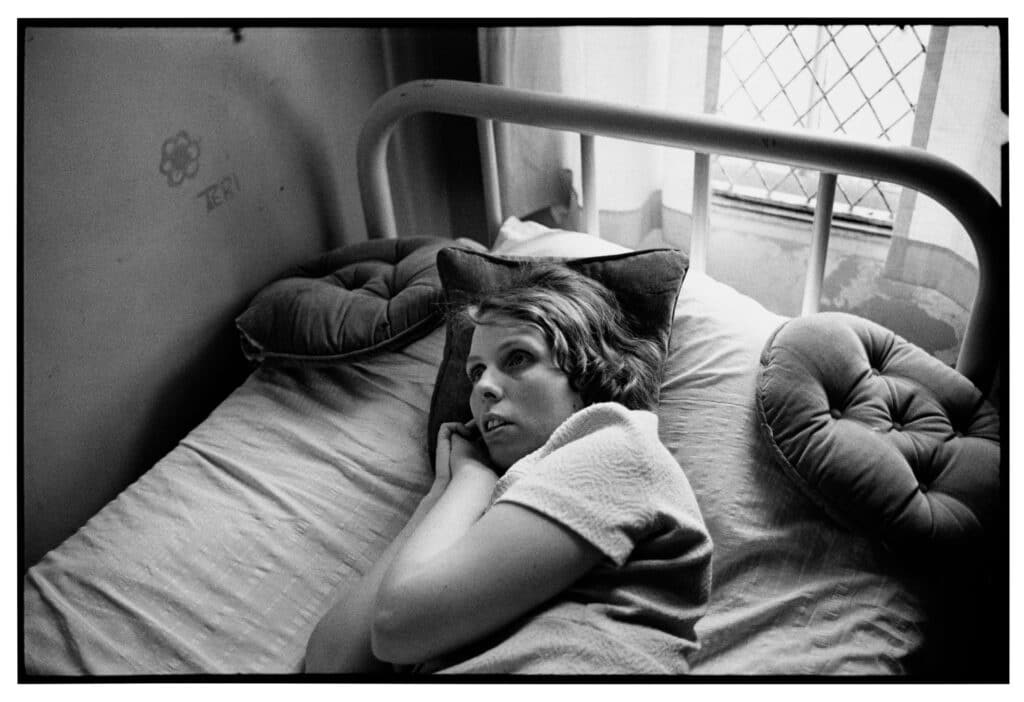
One Flew Over the Cuckoo’s Nest
Mark had first encountered the hospital in 1975 while photographing the production of the movie One Flew Over the Cuckoo’s Nest, (Miloš Forman, 1975), which was filmed on location there. Afterwards Mark began campaigning for permission to photograph on Ward 81. The permission was eventually granted by Dr. Dean Brooks, who was receptive to Mark’s story idea.
“I want to be a voice for the un-famous people … I care about them, and I want people who see my photographs to also care”
But as Paul Roth explains in his essay, Mark also had a personal interest in mental institutions. Mark’s father had repeatedly had nervous breakdowns when she was growing up and had been institutionalized for them. And as Roth quotes from an interview with Mark, where she told the interviewer “I want to be a voice for the un-famous people … I care about them, and I want people who see my photographs to also care.”
For the project, Mark and Jacobs only photographed and recorded those women who choose to be part of the project. Each woman was allowed to choose a name for themselves to use during the project to protect their identity. Mark and Jacobs also recorded their own nightly conversations about what they saw and experienced that day on tape. And they also involved the women on the ward by allowing them to record their own thoughts and feelings on the tapes if they want to.
Showing mental illness
Ward 81: Voices, published by Steidl, is an expanded edition of the original book first published in 1979. This new version includes excerpts of the interviews with the patients, some of the recorded conversations between Mark and Jacobs, along with never-before published photographs from the series.
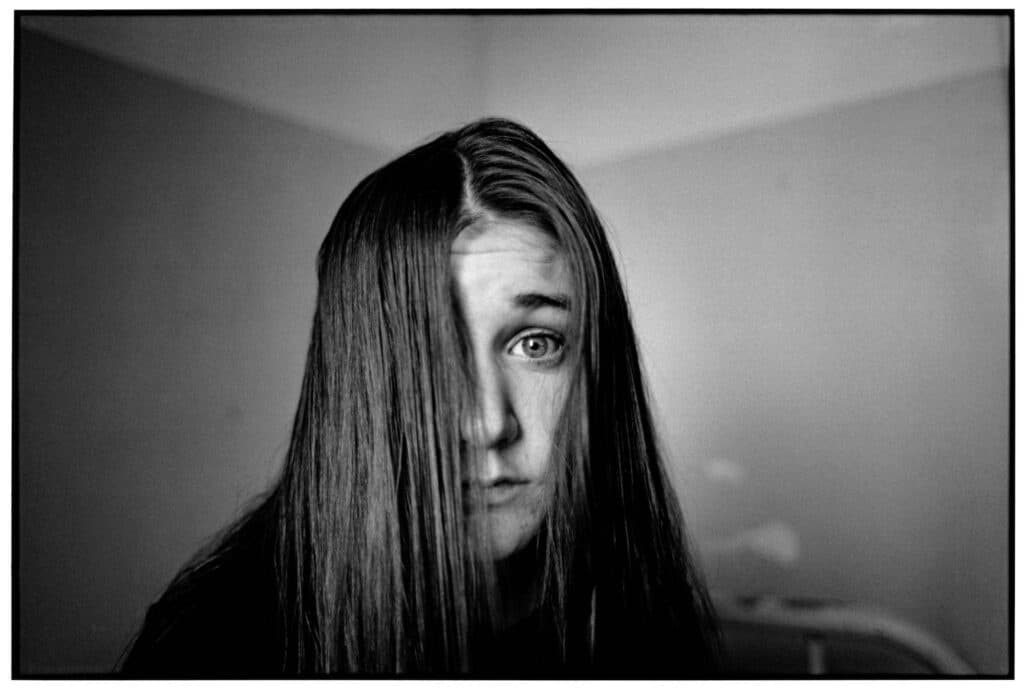
The book also contains new essays. These include “Shock Value: Histories of Psychiatry and Photography” by photo historian Kaitlin Booher who writes about the history of photography and mental illness, and ” Mona, Beth, Laurie and the Others: Ward 81″ by Curator Gaëlle Morel which looks into the photographs made on Ward 81, and new research into the history of the project.
Mark’s photographs show both intimate and intense scenes in the lives of the women of Ward 81. The women are seen in the routines of their daily lives: eating, talking, dancing, laughing, crying, and talking together. But they are also seen suffering mental health crisis, going through treatments, isolated, and in some cases, restrained.
The voice of the silent ones
The addition of the recorded conversations between Mark and Jacobs and the words of the women of Ward 81 themselves add another layer of complexity, and understanding, to the entire project. When combined with the photographs both from the original book and those newly published for the first time it presents a much more in-depth view of the women suffering mental health issues on Ward 81.
“You’re no good, and you don’t belong in this world”
The texts and photographs show the connections between the patients, and the depths of their interpersonal relationships. They also show what is going on I the minds of the patients, and how they relate to the situation they find themselves in. Additionally, they explore the much more fraught relationship between those who work the ward and the patients.
Tommie, one of the patients, is recorded in the book saying “They treat you like you’re no good. What they’re saying is, you’re in a mental hospital and therefore, you’re stupid, you’re an idiot, you’re dumb, you’re retarded, you’re ugly, and you’re no good, and you don’t belong in this world so just drop dead and do what I say or you’ll hear about your wrongs.”
Mark and Jacob record in their conversations events that take place between the workers and patients, and how the power dynamics between the two groups play out. They also discuss how when the dynamic is challenged by the patients, the effects are felt by all those on the ward as the workers attempt to reinforce their power and control.
And as Roth talks about in his essay, the whole project also illuminates the disparities between how men and women were treated for mental illness. As Roth writes “Conditions for female patients were strikingly different than those for men: Oregon State Hospital’s male patients received specialized housing and treatment, while the patients of Ward 81 were sequestered in a substandard facility and languished without personalized care or dedicated psychiatrists.”
“I feel a bit guilty leaving“
On the day Mark and Jacobs left Ward 81, in the last of their recorded conversations, Mark comments in her exchange with Jacob that she feels guilty leaving the women on Ward 81 and couldn’t take them with them.
Mark: “Yeah, I feel . . . I feel a bit guilty leaving.”
Jacobs: “Why?”
Mark: “Because we can’t take them with us . . . because we have to leave them there. I feel guilty in the sense that I know that Mary Iris will go back to crouching on the floor, and Carol S. will go back to not talking to anybody. I feel guilty pulling them out that tiny, tiny bit and then having to let go.”
But the work of Mark and Jacobs on Ward 81 did have an impact on public policy around the treatment of women in mental institutions as Roth writes.
“Importantly, though, the impact of Ward 81 was not merely aesthetic: Mark’s and Jacobs’s experience in the hospital directly affected public policy on the psychiatric treatment of women. Even before the book was published, Jacobs appeared in 1977 in front of the US President’s Commission on Mental Health, testifying to the all-too-typical institutional neglect and mistreatment she and Mark had observed at the OSH. The collaborators saw themselves as witnesses, and they wanted their findings to change things for the better.”
Ward 81: Voices, Mary Ellen Mark & Karen Folger, 288 pages, 141 images, Steidl, 75€.
